A cheerful, native wildflower, blanket flower brightens America's wild places from sea to shining sea — from the balmy beach dunes of South Florida to the Rocky Mountains, all the way through Canada into Alaska.
You couldn’t ask for much more in a native plant, either. Blanket flowers attract butterflies and other pollinators, their deep taproot makes them exceedingly drought tolerant, and they tolerate both extreme cold and extreme heat, as well as salty beachfront conditions. If you've already experienced this year's first frost, include blanket flower in your container garden now for a festive statement; save the seeds and plant them in the spring garden for blooms in the same year. Gardeners in warm-winter climates can plant them in the ground now and enjoy flowers for most of the year.
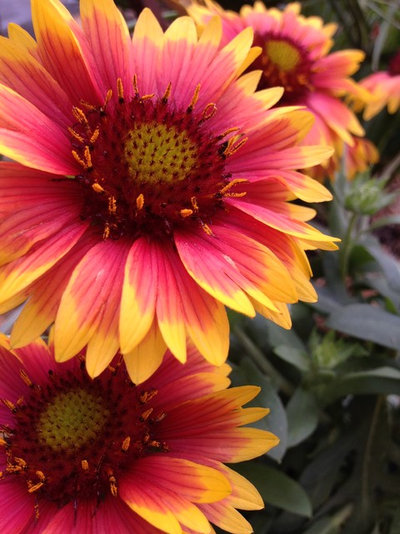 Botanical names: Gaillardia
Botanical names: Gaillardia x
grandiflora (hybrid of
Gaillardia pulchella and
Gaillardia aristata)
Common names: Blanket flower, Indian blanket, firewheel
Origin: Hybrid of two species that occur across North America
Where it will grow: Hardy to -40 degrees Fahrenheit (USDA zones 3 to 10; find your zone) in well-drained soil
Water requirement: Drought tolerant once established
Light requirement: Partial shade to full sun
Mature size: Up to 2 feet tall and wide
Benefits and tolerances: Native; attracts birds, bees and butterflies; drought tolerant; blooms throughout the year and makes an excellent ground cover
Seasonal interest: Blooms from spring to fall, or throughout the year in mild climates
When to plant: Plant container blanket flowers in the ground anytime before frost; plant seeds in spring and enjoy the blooms in container gardens for a festive fall statement.
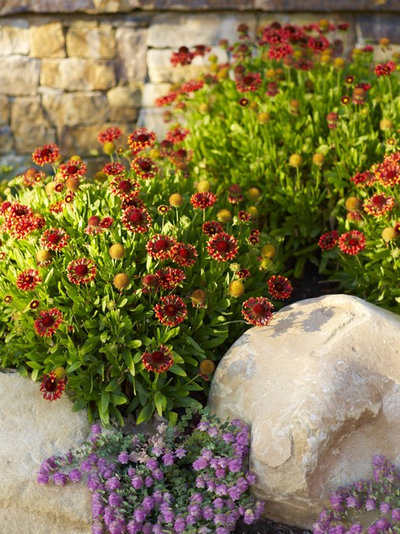
Jeffrey Gordon Smith Landscape Architecture
Distinguishing traits. The blanket flower you're most likely to see offered for sale is
Gaillardia x grandiflora, a hybrid of two native American species from opposite sides of the country,
G. pulchella and
G. aristata.
Gaillardia pulchella grows naturally across most of eastern and central North America, readily adapting to fields, forest clearings and even sand dunes.
Gaillardia aristata is its western counterpart and grows anywhere from the hot deserts in Mexico to the frigid Canadian Rocky Mountains. Whatever the species or cultivar, however, they all go by the same common names: firewheel, blanket flower and Indian blanket.
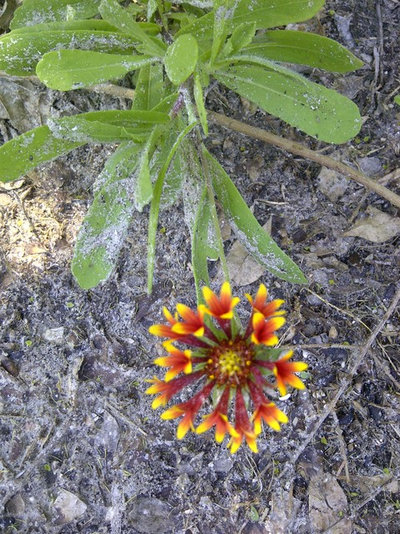
To make matters even more complicated, blanket flower selections come in a multitude of colors and patterns, blurring the lines between red and yellow in endless ways. Some, such as
'Fanfare', have tightly rolled burgundy petals that flare out at the tips in an explosion of bright golden color.
'Arizona Apricot' (
Gaillardia x
grandiflora 'Arizona Apricot', zones 3 to 10) appears to have sunsets painted on its petals in a soft gradation from orange to yellow, looking much lighter and subdued than the more-flamboyant selections. Other cultivars are notable for their habits.
'Goblin' (
Gaillardia x
grandiflora 'Goblin', zones 3 to 10) is a dwarf selection with a tidy form and tight clusters of blooms on short stems, but its fat petals of red and orange are anything but small.
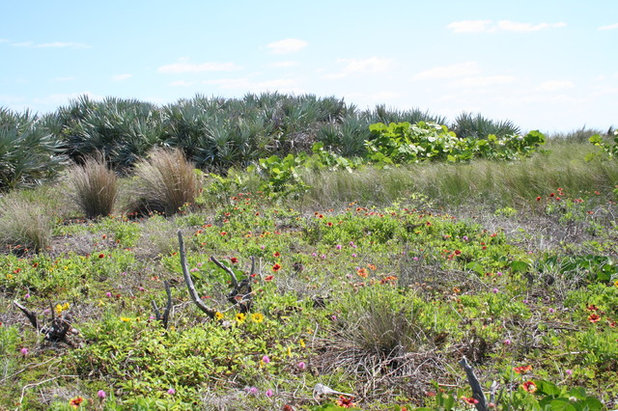 How to use it.
How to use it. Use blanket flower as a durable ground cover, let it reseed and multiply in naturalistic prairie gardens, or simply enjoy it as a perennial in your flower beds. Since cultivars are available with striped flowers colored from yellow to red and burgundy, you're sure to find a selection that fits in with your garden's color scheme.
Hummingbirds are drawn to the nectar, and songbirds love the nutritious seeds (they are related to sunflowers, after all), so resist the urge to deadhead the spent flowers. The plant will continue to bloom while birds line up for the buffet.
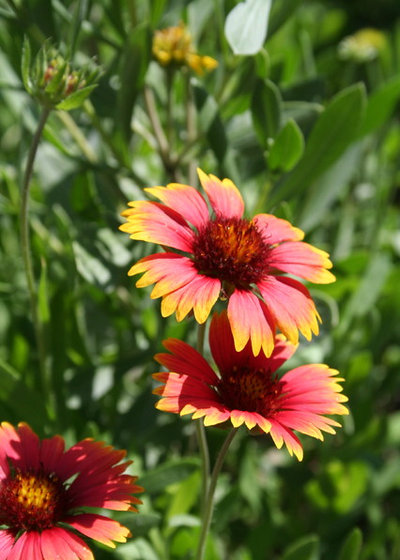 Planting notes.
Planting notes. Most nursery selections are ready to plant and be left to their own devices, but taller selections may benefit from staking to keep the tall flowers from flopping over.
Blanket flowers do not like heavy clay soil, nor do they perform well with wet feet or too much shade. That said, they can tolerate just about anything else nature throws their way and actually perform better under conditions that most other perennials and annuals can't handle. If your blanket flower isn't performing well, try moving it to an even harsher spot in the garden, with poor soil, sand, heat and intense sun.
Plants grown in containers can be successfully overwintered indoors if they are given a sunny spot, but the easiest way to save them for spring is to let the seed heads mature, then harvest the seeds and plant them in spring for flowers within months.





